Drawings of
Vereshchinsky.
I posted here my Indian ink drawings which I made in winter of 2006. These are the reconstructions of Vendian-Carboniferous animals. Most of them are very strange and paleontologists do not know how to classify these creatures correctly.
I tried to draw animals from fossils, but often that was too complicated =)
I appreciate any criticism and advices very much!
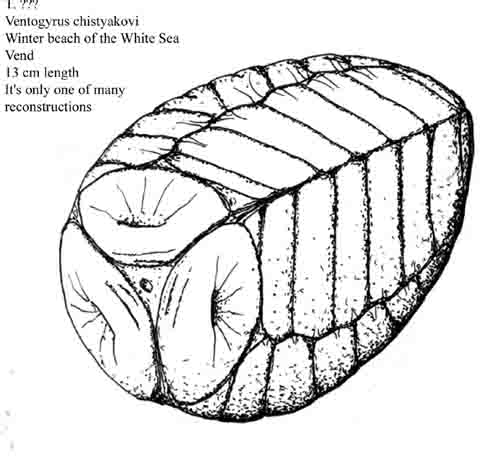
This is one of the various creatures from the Vendian period. There are several different reconstructions of Ventogyrus. I drew only one of them.
All the vendobionts (vendian animals) are very unusual, nobody knows exactly who they are! But they are definitely not cnidarians, worms, mollusks or some other contemporary animals. They are something absolutely different.
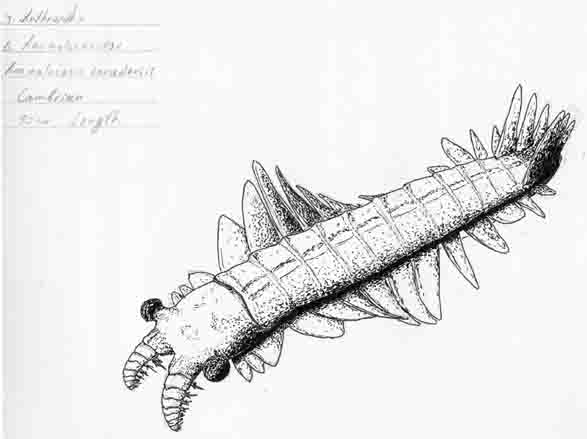
This may be the most famous cambrian animal. Anomalocaris from illustrious Burgess shale! The biggest predator of the cambrian fauna. It's something like an arthropod, bur also very unusual. The most strange part of its body is the mouth. It looks like a circle nimbus of sharp teeth. You can't see something similar in the other groups of arthropods!
When scientists discovered Anomalocaris, they found only its mouth organs. The scientists thought that it was just a couple of shrimps and called them Anomalocaris (anomalous shrimp). Then the circle nimbus was found (the scientists described it as a jellyfish). Only when the whole animal fossil was found, paleontologists realized that Anomalocaris had been a really huge predator over a meter in length!
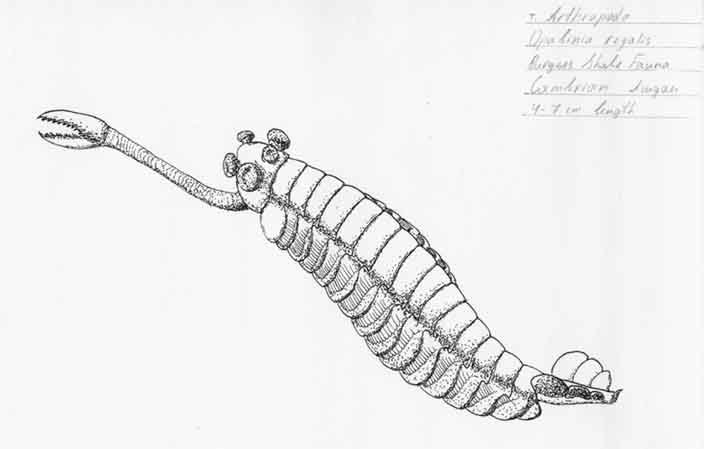
One more creature - Opabinia regalis. They were very common in the cambrian sea.
Opabinia seemes to be also an arthropod. But that unpaired "trunk" confuses a lot of paleontologists.

I don't actually know where does this creature have its front, back, top and bottom. Only 10 years ago Hallucigenia sparsa was showed on reconstructions on its spines. Now it is considered that the animal walked on tentacles.
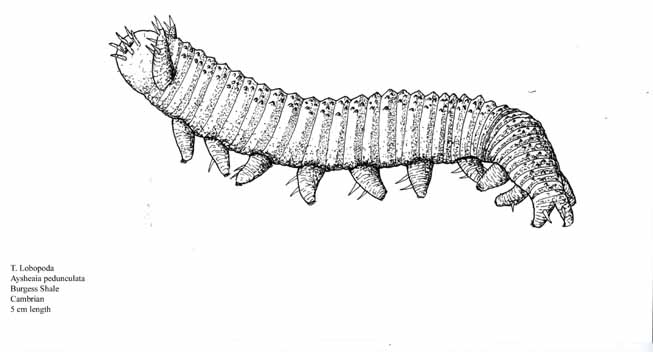
Like the previous creature, this is a lobopode. Lobopods are close related to contemporary water bears and onichophores. Apparently Aysheaia feed on cambrian sponges - archaeocyathids.
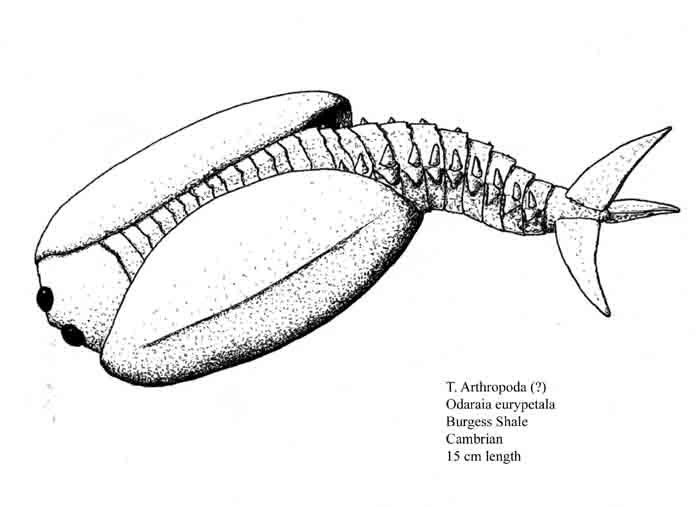
Another arthropod which scientists can't classify correctly. I don't understand how did this animal move itself! The end of the abdomen bore something like threefold fin. May be, the creature moved by twisting its abdomen?
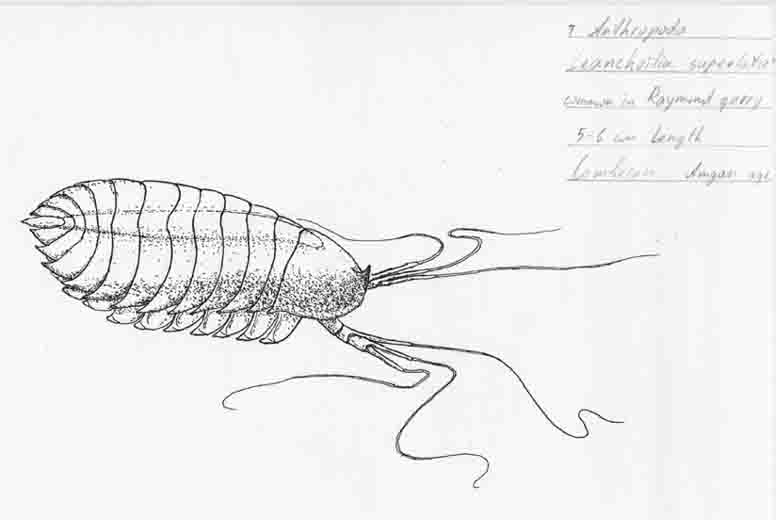
Leanchoilia
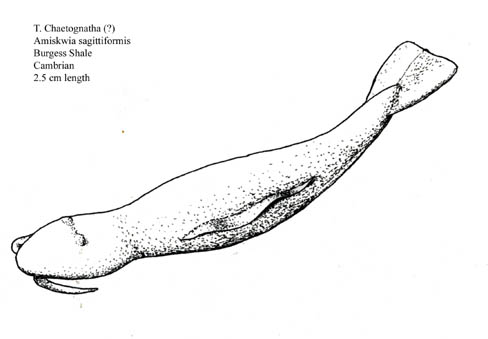
Paleontologists usually classify this animal as Chaetognatha because of the similar mouth organs.
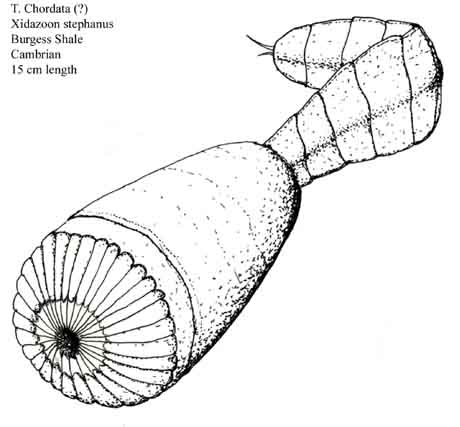
Absolutely incomprehensible creature...
Most of paleontologists think that this is something related to chordates, owing to myomere-like tail.
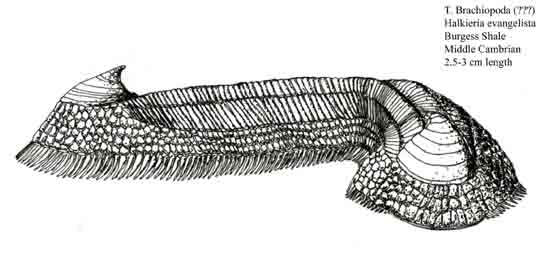
The animal looks like chiton. It has two asimmetric shells and that makes Halkieria close related to brachiopods.
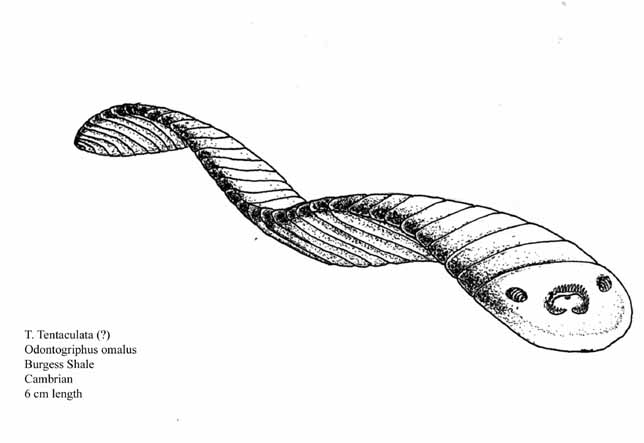
Great band! I don't know what it is.
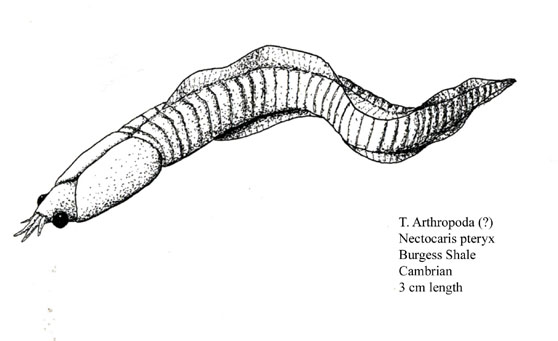
That's my favourite! A very elegant animal! It looks assembled from parts of fish, squid and arthropod.
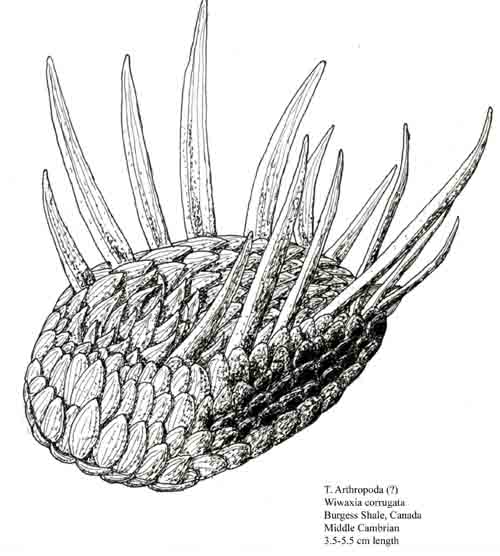
This tank is rather well-known thing. Nonetheless it is difficult to classify it somehow. Looks like a strange arthropode.
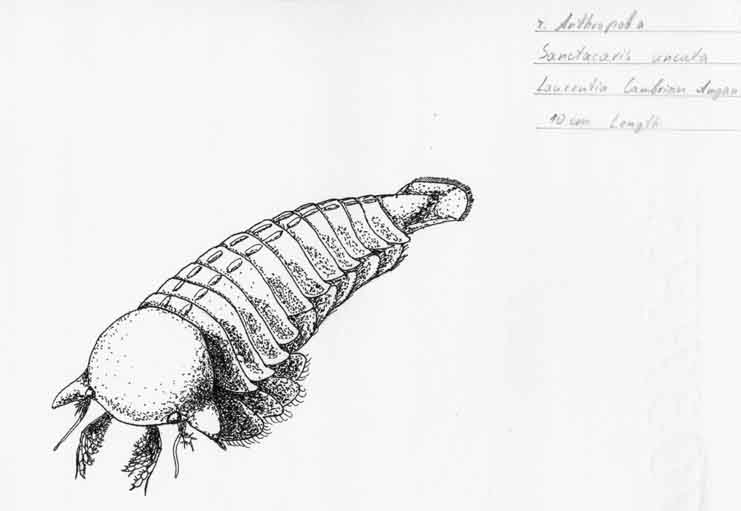
Finally a normal arthropod! A primitive chelicerate Sanctacaris.
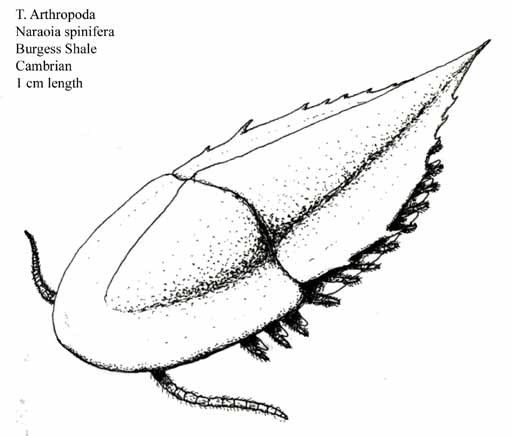
One of the first trilobite species. I drew here a quite rare Naraoia spinifera. Naraoia compacta was more common in the cambrian sea.
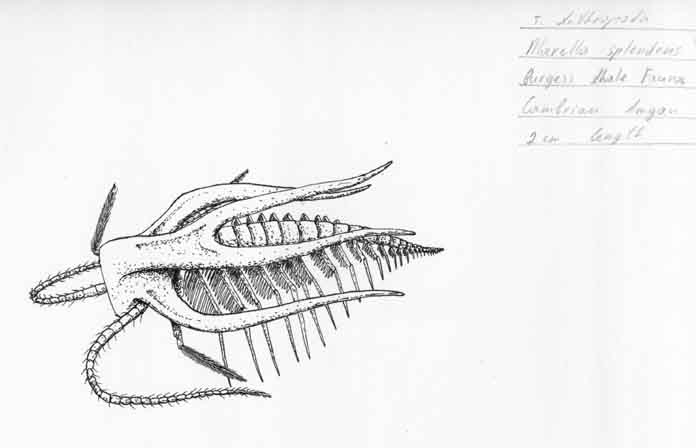
Lookes like a trilobite. But you shouldn't think so! This is a very strange pelagic arthropod Marella from the class Marellomorpha.
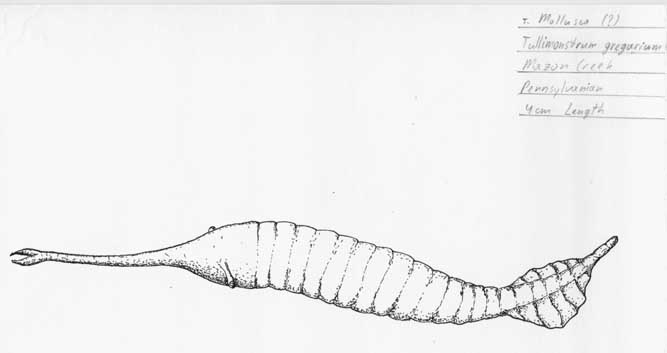
Tullimonstrum gregarium is better known as "carboniferous nail". Nobody knows what it is.
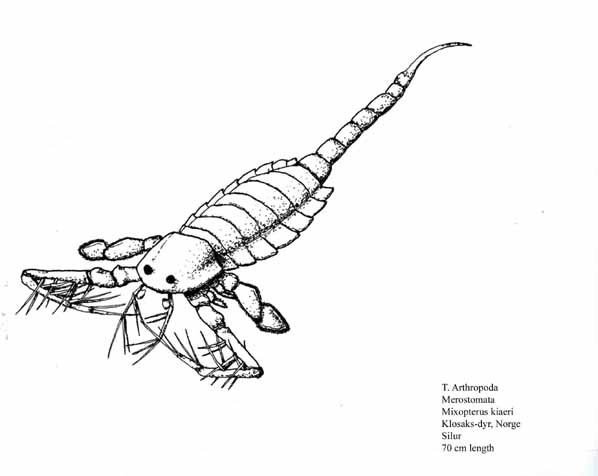
This is a very interesting sea scorpion. One of the first sea scorpions with venomous gland.
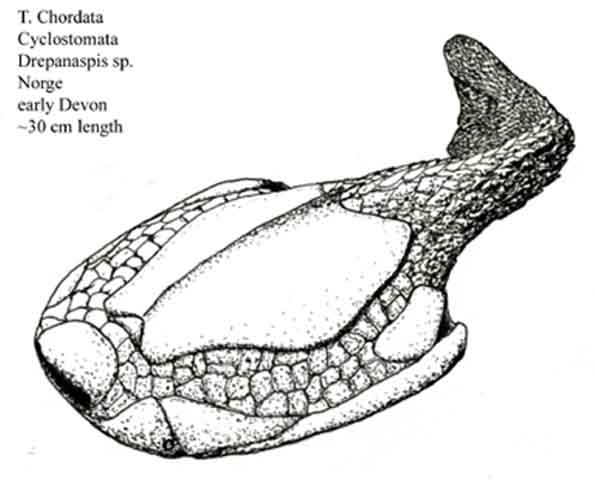
Ostracoderms - jawless fishes with an armor of bony plates. They are relatives of contemporary hagfishes and lampreys.
Ostracoderms weren't good swimmers, they couldn't move with anything except their tail. But a few years ago scientists put their plastic reconstructions in the wind tunnel. They found out that these creatures were very streamlined and their body creates a considerable lifting force in the water stream! It is possible that ostracoderms could soar manoeuvring dexterous in water currents.
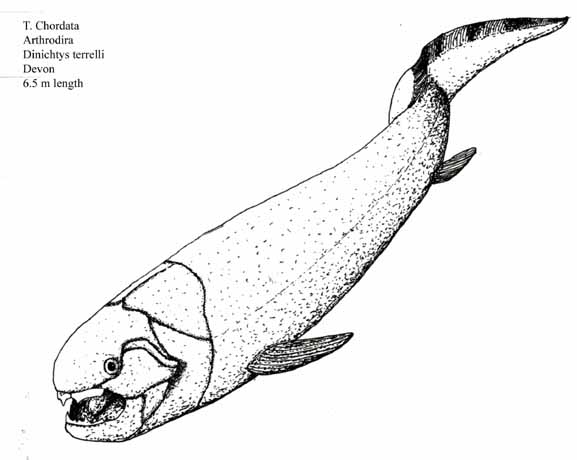
The legendary Dinichtys! It belonged to the order Arthrodira - very early bony fishes. Dinichtys was one of the dominating predators in the devonian sea. It had no teeth but it's jaws had very sharp edges wich protruded from the mouth. The tail fin was rather small. Apparently Dinichtys was slower than most of contemporary fishes, it spent a lot of time resting on the sea bottom.
There are no full skeletons of this giant fish, only huge jaws were found. I drew Dinichtys from the published picture.
go to the
main page.